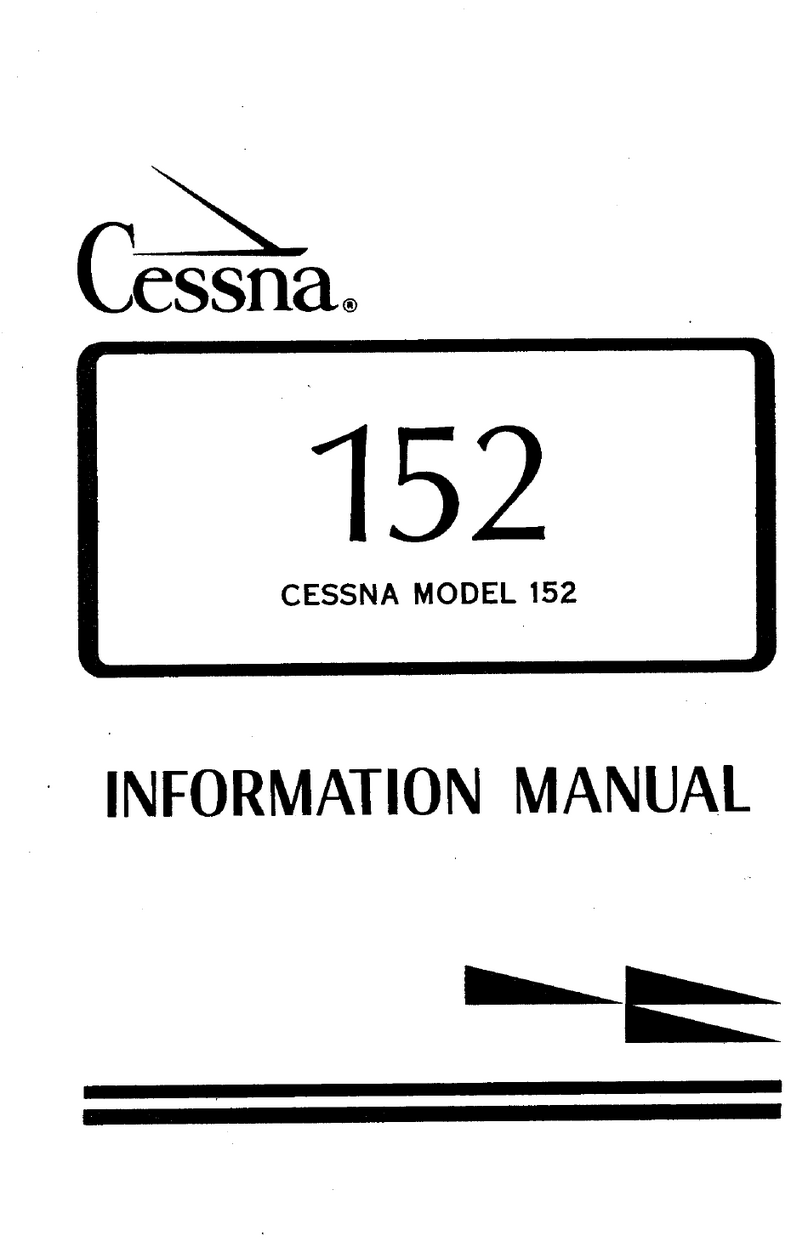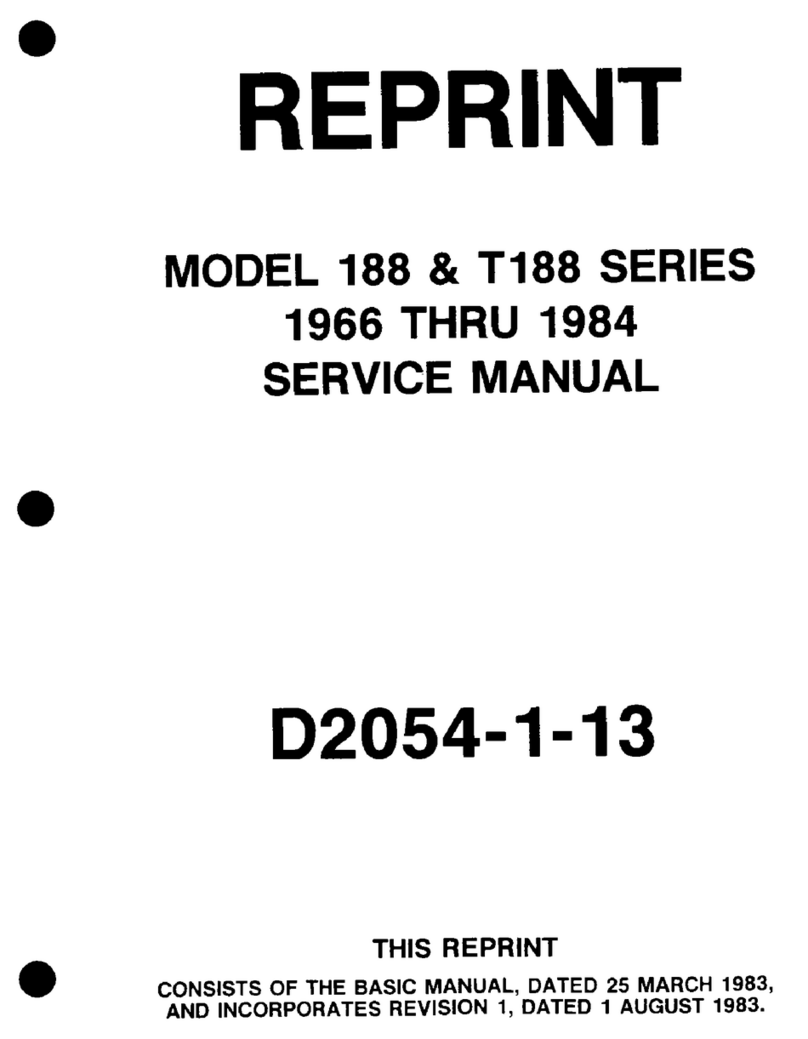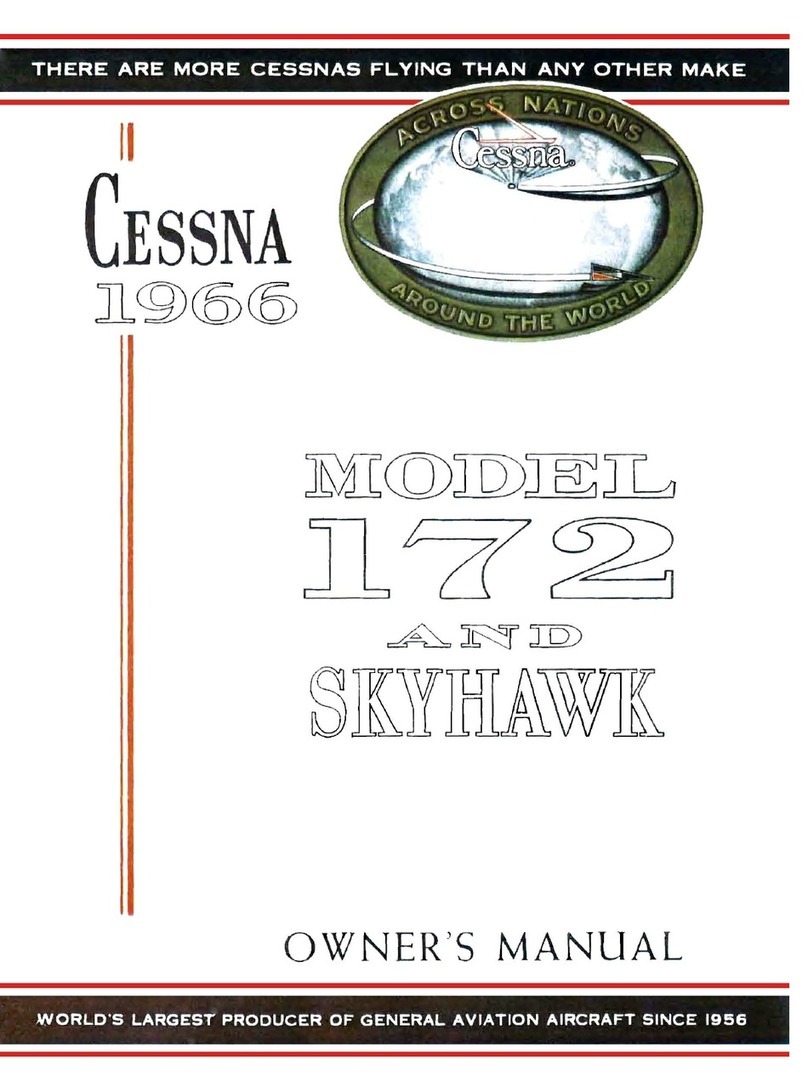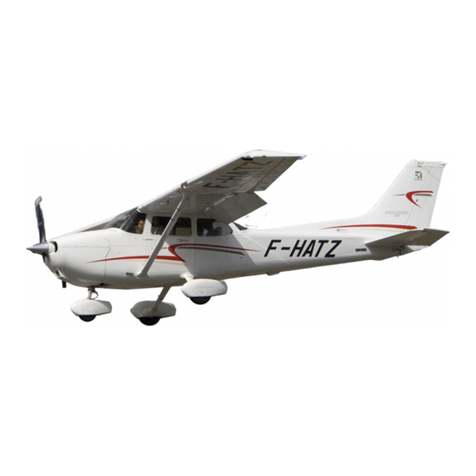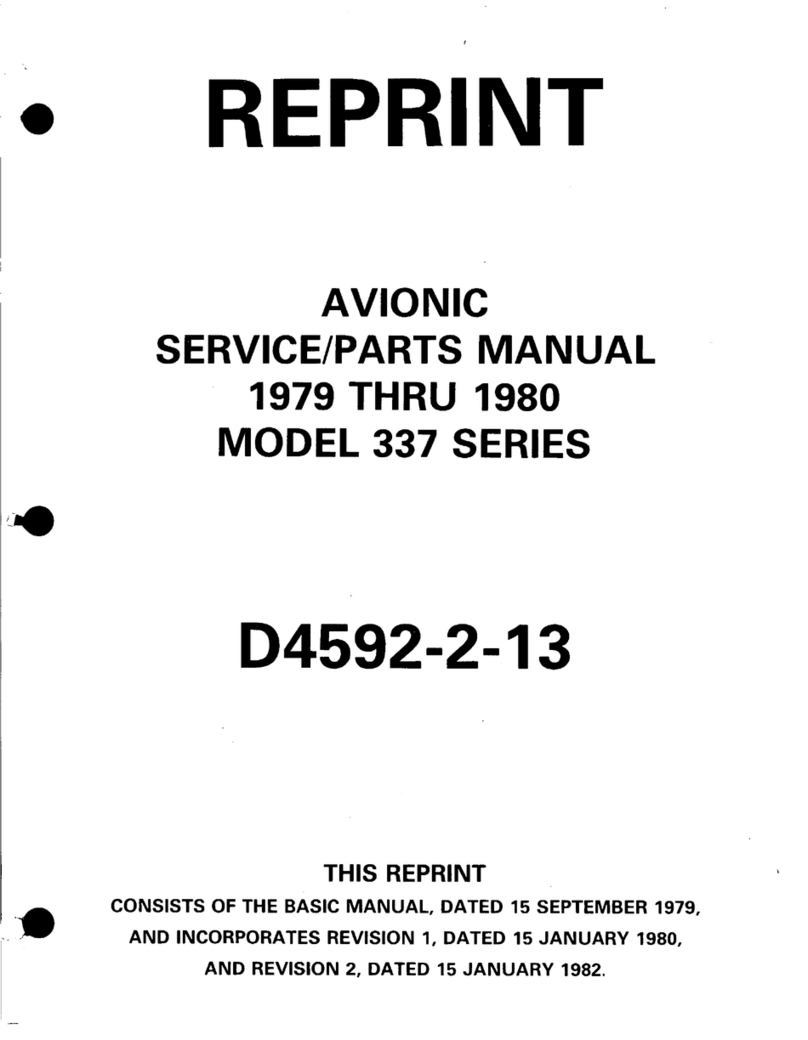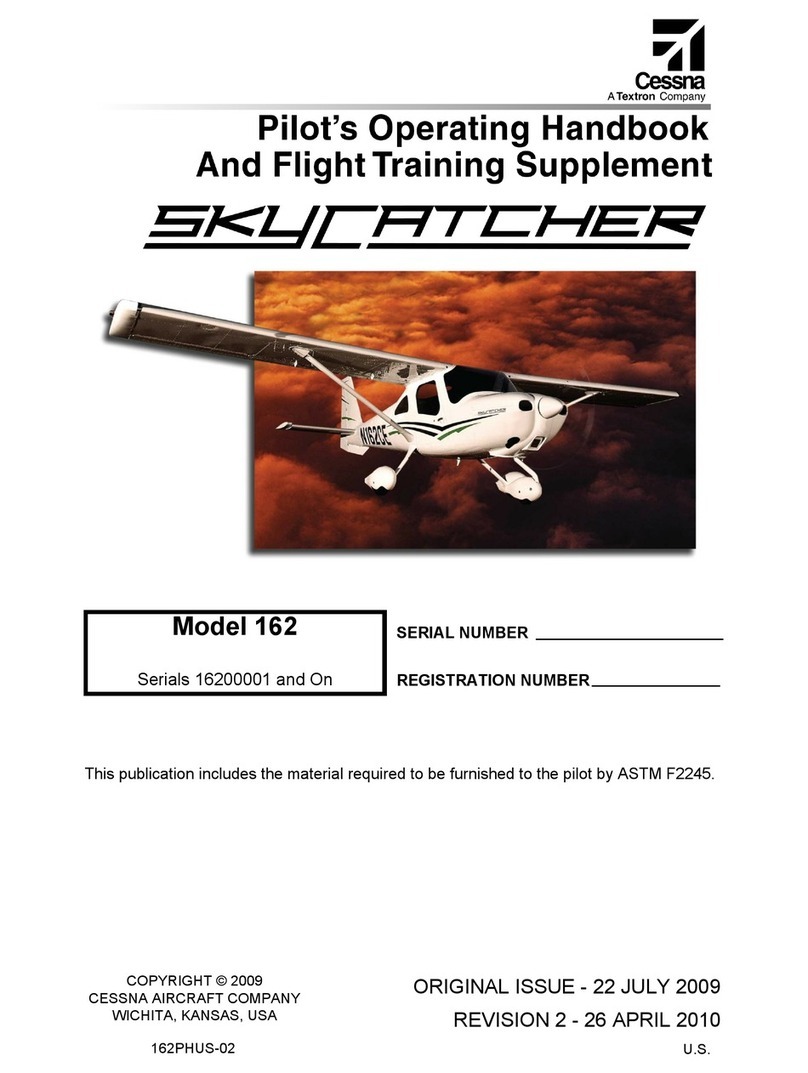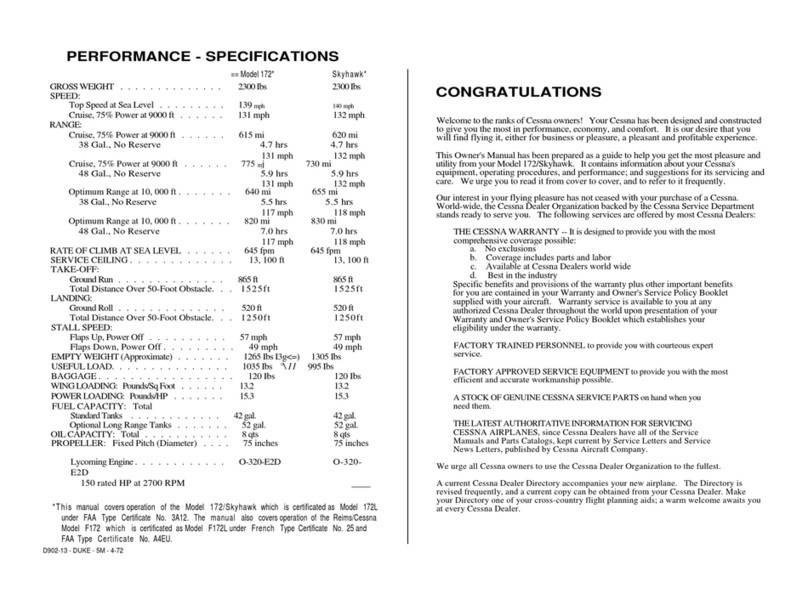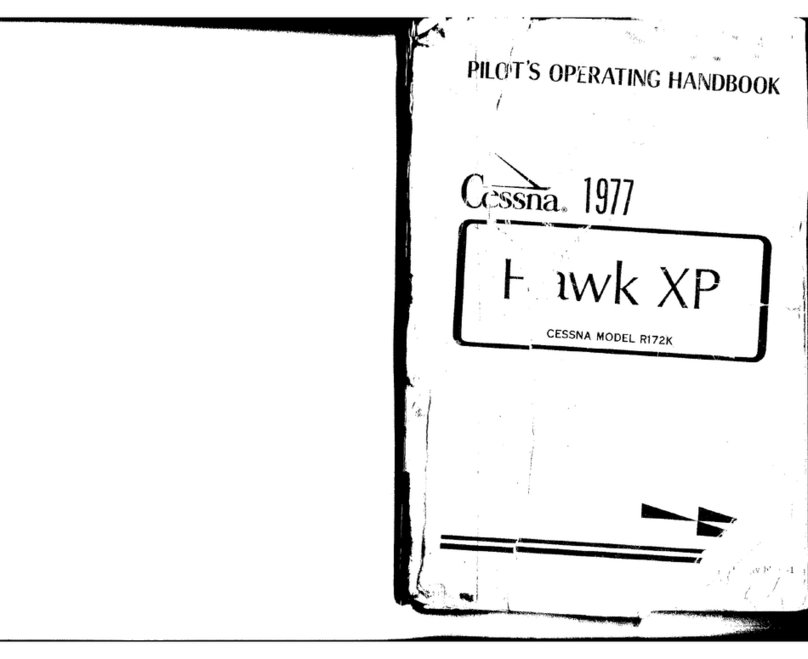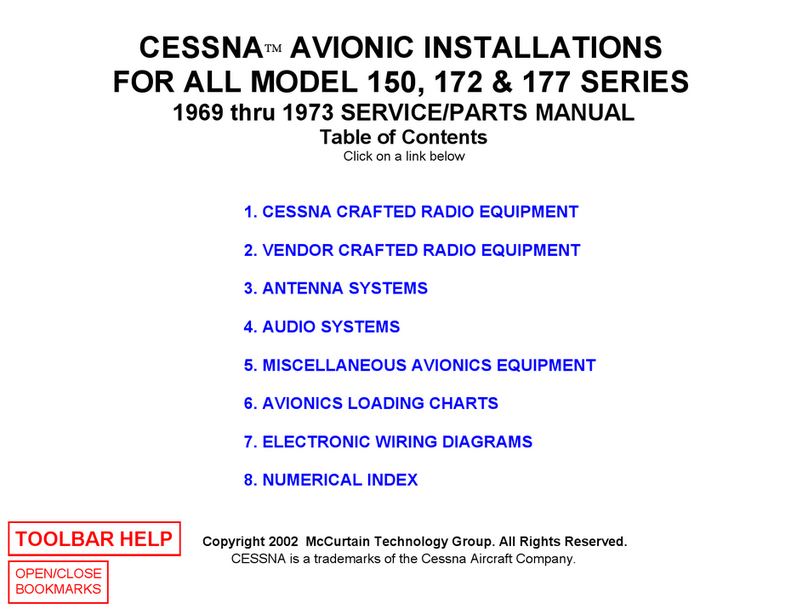
EXIER'OR 'NSPECI'ON
Tum o nast€r sult.h and.lrock ro.l q!rn0 -
ty tndcrtors, ti.n turn malt.r 6yttch 'loff, "
Check lsntllo. tqltch "OtF."
Check that lu€l bny *I€ctor volvc hlndlo l.
Remov€ conlrol whe.l lo.k.
che.k bagg.{e door lor 6ecurlty.
Inspect atrcp€€d .tatlc source hol.! on .1d..
oI l$.laAe r.lkon€ lor stoppase.
Redde rdd€r eu.t lock, tr lndt ll€d,
DiscdnDecl tail ile-dwn,
check ruel bay venl op€nrna Gt sha tlp trril-
Disconnect {tng tt.-doen.
!.lore the lrlst lrlght ol ihe day and rlt.r
each .efueling. us€ sampl€r cup ad d[1.
snall anount of fuel l.om quick-drrtn
v.lv€ in tuel bay to rmde po.stbl€ u.l.r
and *dlme.r. check drain v.tve clo..d,
check main whe€l tire lor proper lnilruo[
NOTE
Vlsu.ltyche.k ruel r ler caps.
lrupection plales, and gener.l
al.oalt condition durlnC Mlk-
U ntght flight ts planne4 cbek
oper.tlon ol an lishtsj ud
roke 3ure a rlashlisht is avail-
Ch.c* prop€lI€r and spinn€r lor nicks and
.eclrlty, and properl€r Ior oil lea](s.
Check oo6e vhe€l strut and tt.. Io! proper
Dtsconnect noBe rie-doe.,
Ch.cl oll lcvel, Do not operale vith le53
thon nlne querts. Illl for dtended ltishi-
Beiore the ltrs! tu3ht ol the d.y and alt€r
o&h retuell.g, glll out shaln€r dr.in
kmb Io. aboul lour s€con& to clear fuel
.tmlne. of Doasible *ater and sedlnent.
Chcck slr ner d.ain closed. Il €ter is
ob[rv.d. lh.r€ ls a possibility thit the
luol b{y sunl)s conlaln wate.. h .ddition
to oho(klnT th€ Iuer bey sumps as @tliled in
rloD s rbovo, the Iu€l rdelvotl dl.in ptugE
.hould ho romov€d to check lor lhe presenc€
o- o"
@"
o" @' x;*ru*'ll,*r,::r""Jr,ir .liis*!: ""'
i'tgur€ l-1,
TFI
fettion I
E-
I- L--
OPERATING CHECK LIST
One oI the lirst step€ in obtaining the utmost performance, serYice,
and flying enjoyment from your Cessna is to familiarize yourself with
your airplane's equipment, systems, and cortrols. Ihis can best be
done by reviewing this equipment while sitting in the airplane. Ihose
items u/hose function ard opeaation are not obvious are covered in
Section tr.
Section I lists, in Pilot's Check List form, the steps necessary to
operate your airplane efficiently and saJely. It is not a check Ust in its
true form as it is considerably longer, but it does cover briefly aII of
the points that you should know for a typtcal flight.
The flight ard operatlonal characteristics of your airplare are nor-
mal in all respects. There are no "unconventional" characteristics or
operations t}Iat [eed to be mastered. AII controls respond in the normal
way within the entire rar8e of operation. A1l airspeeds mentioned ir
Sections I, tr, ard Itr are indicated airspeeds unless otherwise noted.
Corresponding calibrated airspeeds may be obtained from the Airspeed
Correction Table in Section VI.
BEFORE ENTERING THE AIRPIANE.
(1) Make an exterior i[specuoD in accorda[ce with Iigure 1-1.
BEFORE SIARTING THE ENGINE.
I
il
I
(1) Pilot's Check List -- Revievt/ check list on IeIt front doorpoat.
(2) Seats and Seat Belts -- Adjust and lock,
(3) Bmhes -- Test and set.
(4) Master Switch -- rtON. rr
(5) Landing Gear -- Handle neutral a.nd down light green.
(6) Landing Gear Lights and Horn -- Push to test,
(?) colrl llaps -- "oPEN. " (Move lever out of locking hole to lepo6ition.)
1-1

